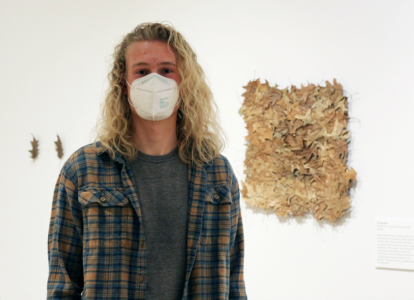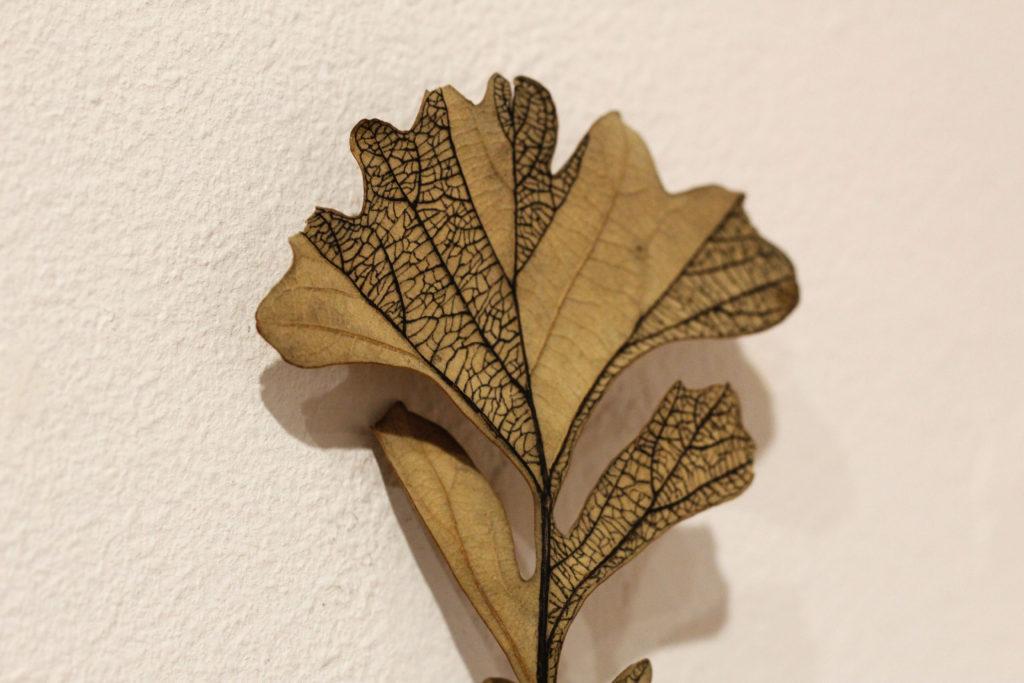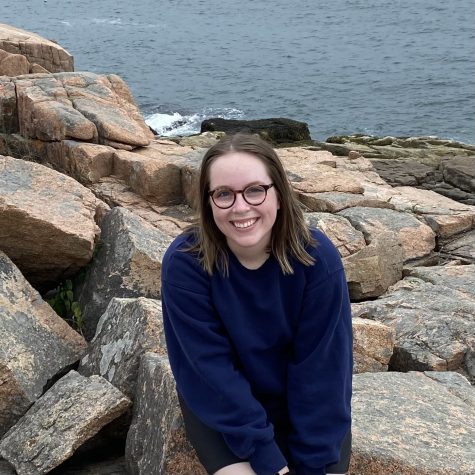In hurrying from building to building to escape the cold winter air, few Grinnell students may stop to notice what’s underfoot.
Max Sorenson `22’s new show in Smith Gallery, “Leaves / Traces,” seeks to change that by elevating one of nature’s humblest and most important appendages: the leaf.
Sorenson, who is a studio art and biology double major, has long been interested in the natural world. Growing up in the Midwest with interests in biology, conservation and gardening motivated his fascination with the details of the landscapes surrounding him, like leaves.

“I’m just interested by the role they play in the landscape, and how they’re often overlooked because of what they form as a larger whole, like losing the leaves for the forest,” he said. Sorenson wanted to showcase aspects of the world around us, particularly the natural world, that often go unnoticed, by “inviting people to share in this attention to these really small details.”
The exhibition features leaves from across the College’s campus marked with black ink. Sorenson marked them using two techniques he calls “leaving” and “tracing.” When “leaving” a leaf, Sorenson works in the negative by filling in spaces on leaves where there are no veins.
“I respect and listen to the veins by letting them be, stopping when the nib of my pen meets the ridge of a vein,” he writes in the exhibition label. When “tracing” a leaf, he does the inverse, drawing over the veins.
The effect of the contrast draws attention to the intricacy of the dense, jagged webs of veins that populate even the smallest, brownest or most unassuming-looking leaves.
The medium of the leaf itself is a shift from Sorenson’s previously meticulous, though mostly representational style of pen-and-paper drawing.
While Sorenson began drawing more frequently over the past two years, he has been experimenting with focusing directly on the object he is representing for several months.
“It kind of directly involves the object I’m drawing or interested in the actual piece in a way that I think it’s just more intimate, and it makes me feel more closely connected to the thing that I’m drawing,” Sorenson said.
Sorenson said that assembling the exhibition was a challenge. “It’s pretty daunting … it [Smith Gallery] doesn’t look very big from outside, but then you walk in and then I was thinking ‘Oh my God, I need to fill this in.’ Walking in when I had completed all the drawings for the show was just kind of scary because I walked in with a Tupperware — that’s how I carried my stuff in — just a tiny Tupperware full of leaves. But it was really fun to fill in that space.”
The leaves vary in size and shape, and include seven different species. Collected between Feb. 12 and March 2, 2022, the leaves are representative of a very particular time and place. As Sorenson notes in the show’s label, the College’s combination of native and non-native decorative species on campus situate the exhibition in a unique space and geography.
The staging of the leaves is sparse, but striking. “I really wanted to give each leaf the space that it needs … it gives people space to step into and look closely,” Sorenson said.
But while the stark black ink Sorenson used to mark the leaves gives them emphasis, it also draws attention to their fragility. The only leaf with major structural damage included in the exhibition, “Swamp white oak #6,” is so delicate that its system of veins and holes looks almost lace-like. Others curl or yellow with age.
The changing of the leaves, Sorenson said, “involves me in the natural process a little bit … they get decayed, and it’s shifting as I’ve made it, which is really interesting, to feel that and watch that happen.”
In one of Sorenson’s favorite pieces, “Two Squares,” the process of change is especially evident. The work, which consists of leaves that have been pinned together with pine needles and marked with ink tracing, is made of entirely organic material, but is simultaneously artificial in its construction. “Through these processes of attention and fabrication,” the object label reads, “the work becomes an object of care and celebration.”
Care and intimacy are central to the show, and to Sorenson’s philosophy. “I urge everyone to just look at the small things, I think, is really what the show is about. Just take time to pay attention and be outside. It helps. It helps with everything.”
The exhibit opened on April 5 and will be open to the public until April 16. More of Sorenson’s work can be found on his Instagram account, @maxcsorenson, or on his website, maxcsorenson.com.





































































